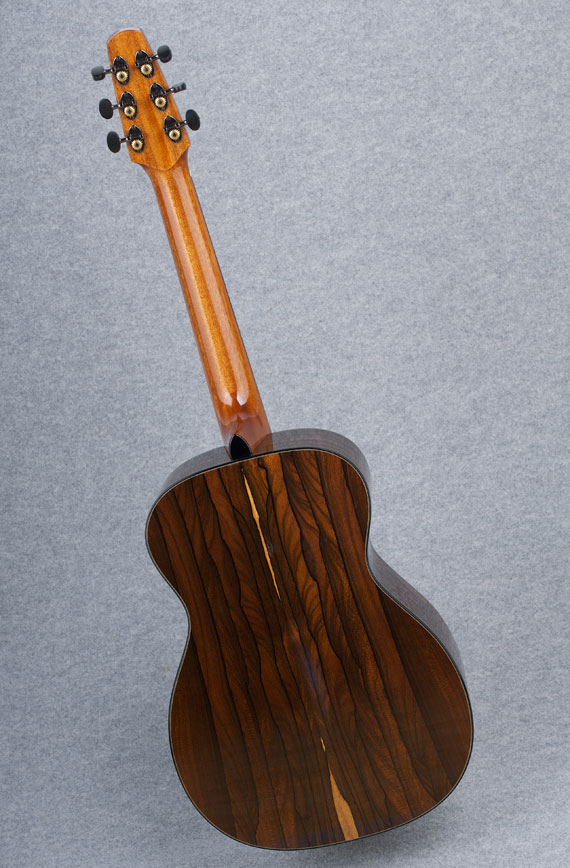
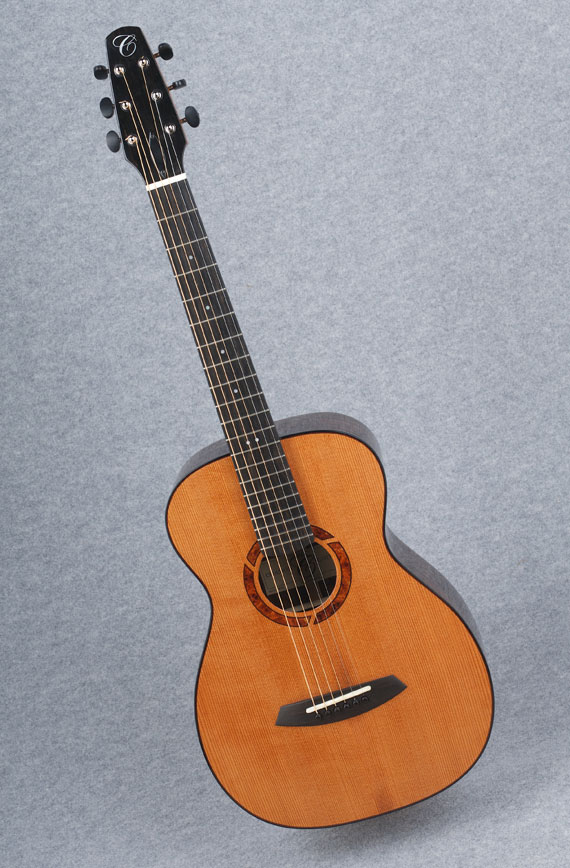 PARLOR
PARLOR
An intimate guitar with a big dynamic range. As the name suggests, this small body is at home in a living room but is quite capable at cutting through a mix of other instruments. Great for solo acoustic performing.
Lower Bout – 13.5″
Waist – 8.375″
Upper Bout – 10″
![]()
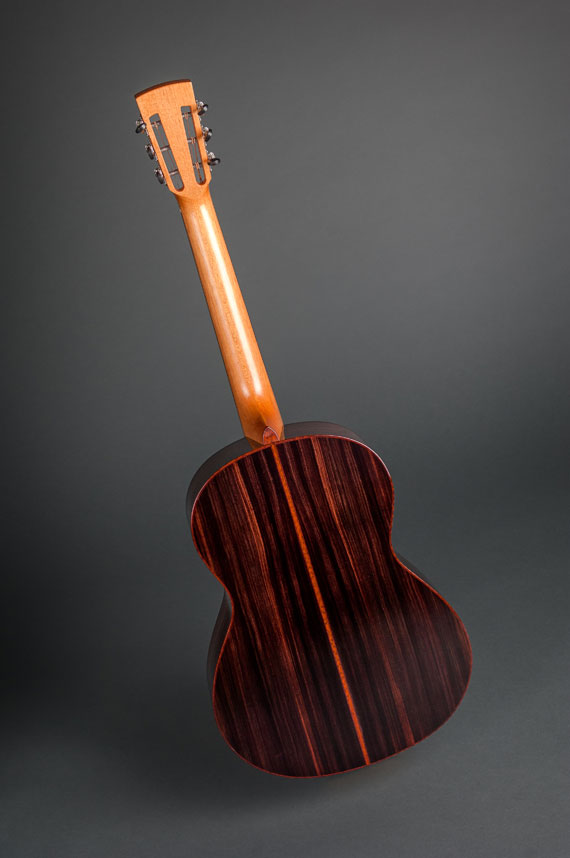
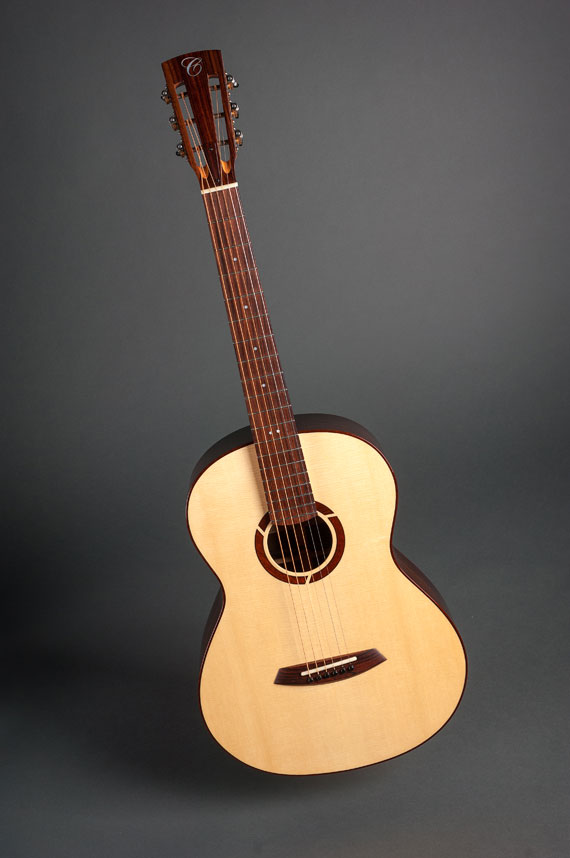 CLASSIC
CLASSIC
A steel string guitar in a classical body. Small and comfortable to play, this guitar hits a sweet spot between sizes.
Lower Bout – 14.75″
Waist – 8.375″
Upper Bout – 10″
![]()
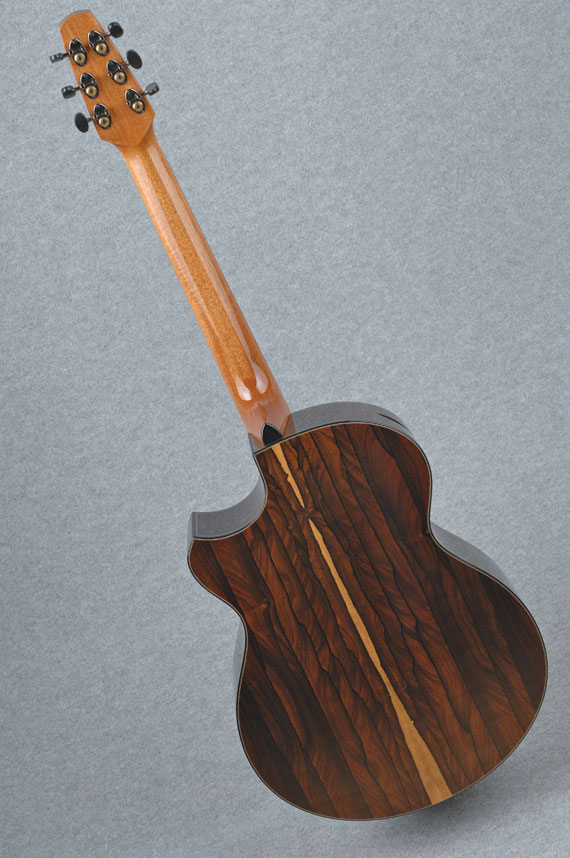
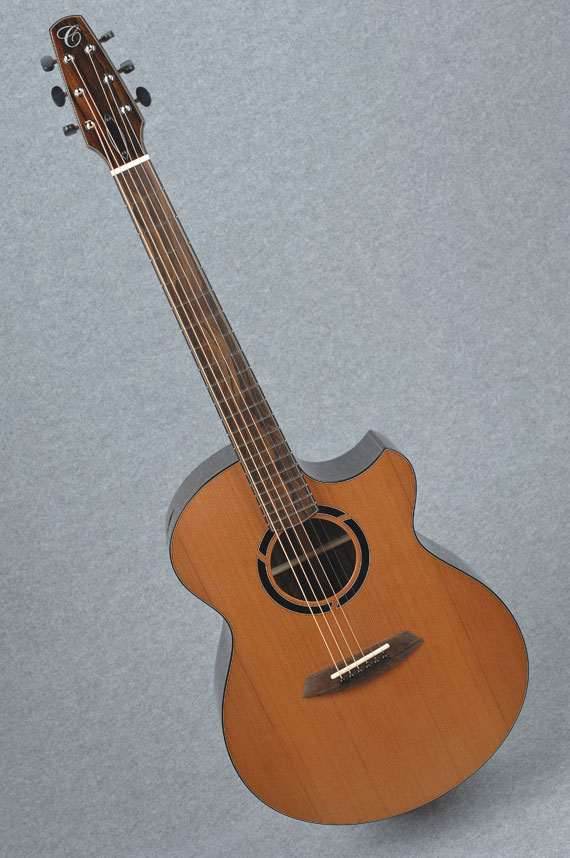 CONCERT
CONCERT
Comparable to an OM, this is an exceptional all-purpose body size.
Lower Bout – 15″
Waist – 9.77″
Upper Bout – 12″
![]()
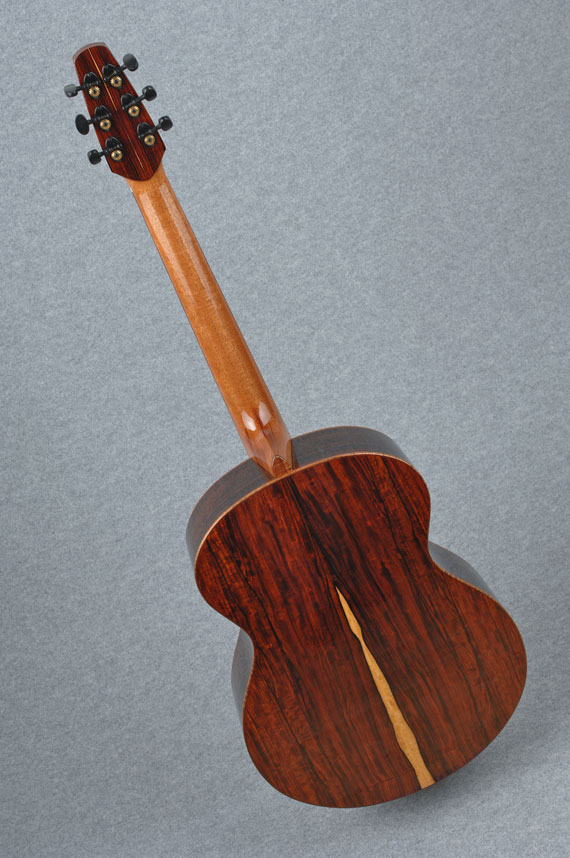
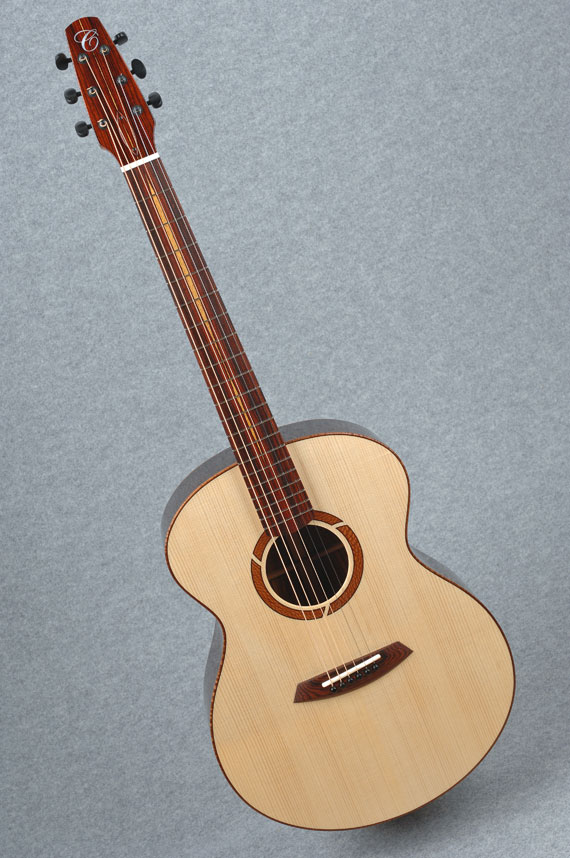 AUDITORIUM
AUDITORIUM
About the size of a Dreadnought but with a pronounced waist. Similar to the Concert, just a bit larger with the sound of a larger body.
Lower Bout – 15.75″
Waist – 10″
Upper Bout – 12.125″
![]()
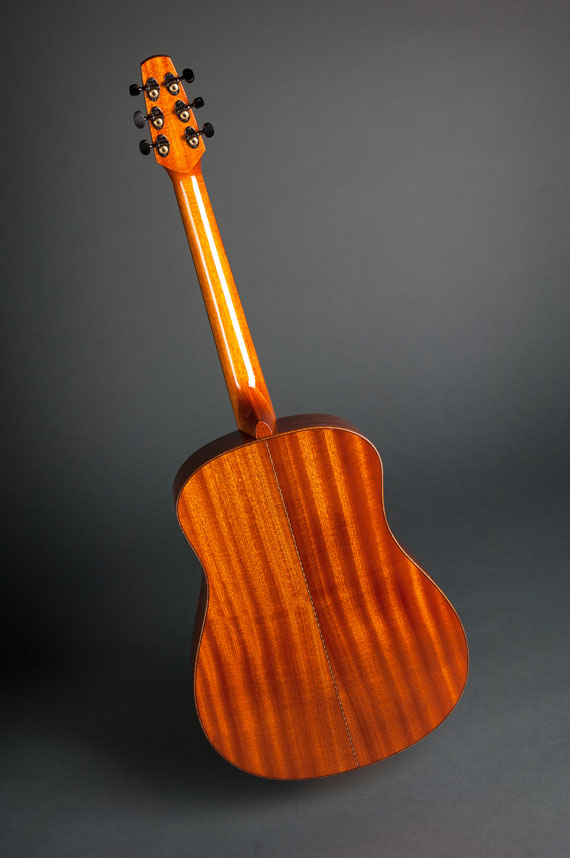
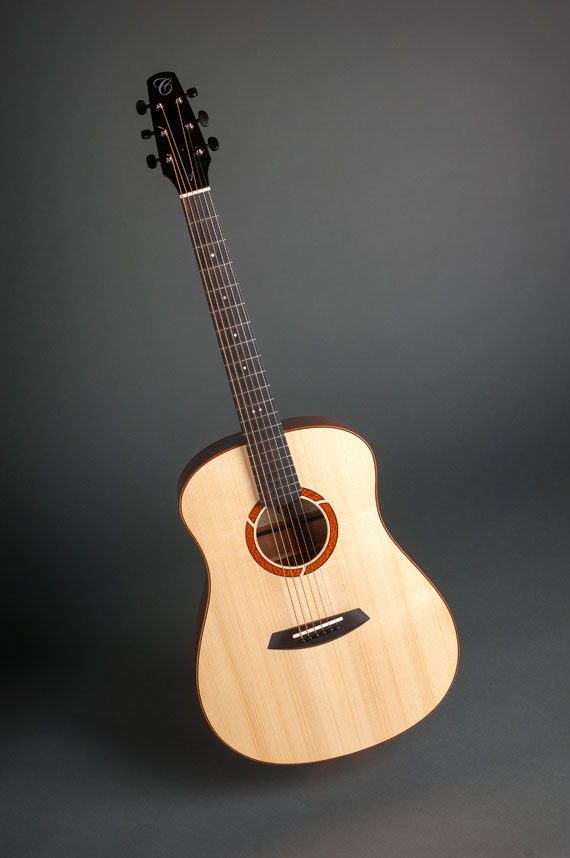 SIGNATURE DREAD
SIGNATURE DREAD
My contemporary version of a Dread. More curves, similar sound.
Lower Bout – 15.75″
Waist – 10.5″
Upper Bout – 11.5″
![]()
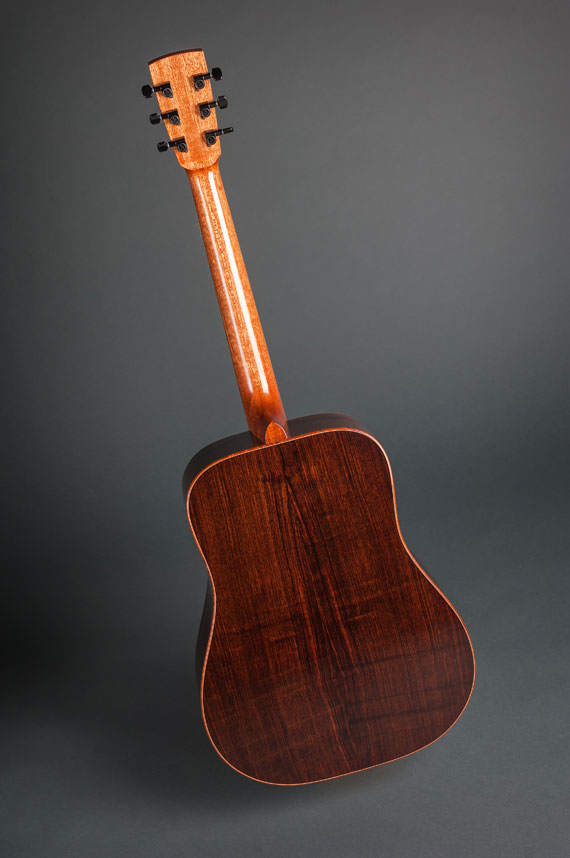
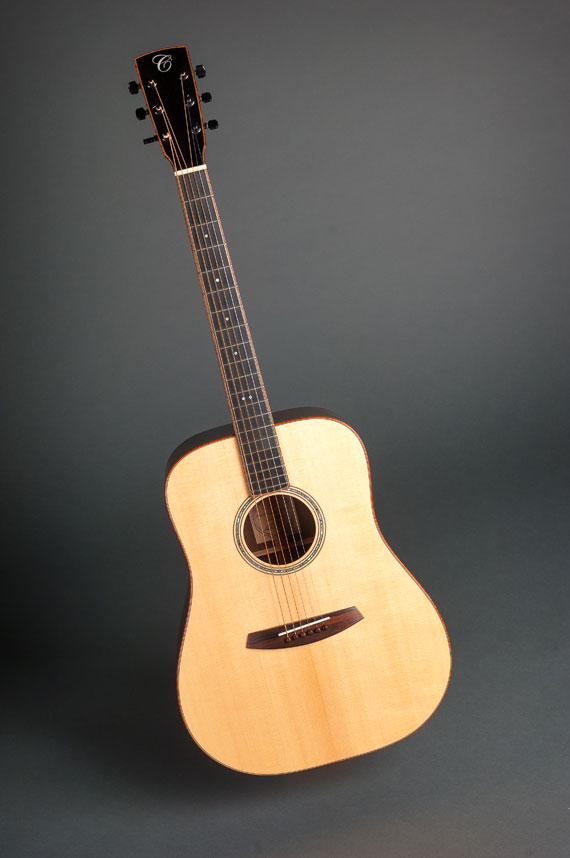 traD
traD
A traditional Dread but not a clone.
Lower Bout – 15.785″
Waist – 10.75″
Upper Bout – 11.25″
![]()
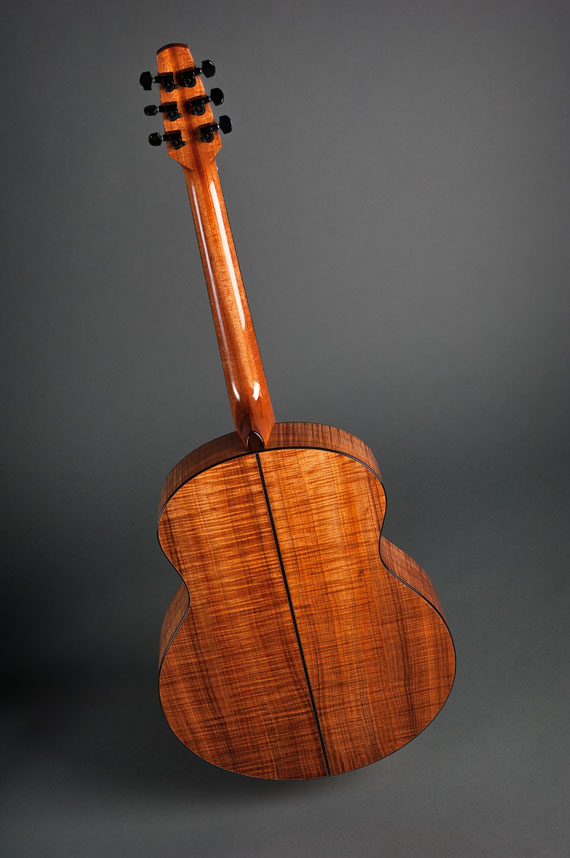
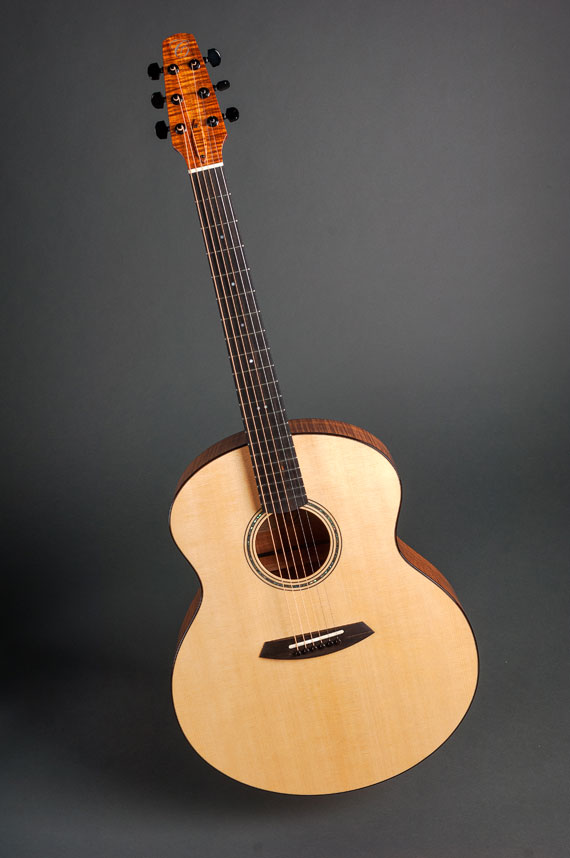 JUMBO
JUMBO
Rumbling bass with balance. A full Jumbo with a huge sound.
Lower Bout – 17″
Waist – 11.75″
Upper Bout – 12.5″
![]()
Choosing a Body Size:
The first thing to know is that the listed models are a starting place. As a custom builder, many aspects of these models can be customized. Body depth, scale length, and number of frets to the the body are flexible and can often be customized at no extra charge. And if you’re looking for something completely different, I can design an entirely new body for a reasonable fee.
Comfort and tone should both be considered. Generally smaller body profiles are more comfortable to play, but the thickness of the box is part of that equation. Larger bodies can be made more comfortable by keeping the box thinner or by incorporating a Manzer style wedge (tapering the body thickness so the bass side of the body is thinner and the treble side thicker).
It’s possible to build tonally balanced guitars in every model but as body width increases, the bass takes on a different character. It becomes less direct and has more air behind it.
Small bodies can actually be louder than large ones when projecting forward or when cutting through a mix. Larger bodies tend to sound more diffuse and are more capable of surrounding the player with sound.
It’s difficult to make broad generalizations about which body styles fit certain playing styles. There are plenty of exceptions but in general, fingerstyle players usually prefer something from the Auditorium model down to the Parlor, flat-pickers from the Concert to the Jumbo. Jazz players tend to favor the smaller sizes and strummers the larger. The Concert and Auditorium are in the middle of the spectrum and are best at multi-tasking.
The Classic Model is designed to be 12 frets to the body. All other bodies can usually be made with 12, 13 or 14 frets.
All models come with an Ameritage case, except the Parlor which comes with a TKL.